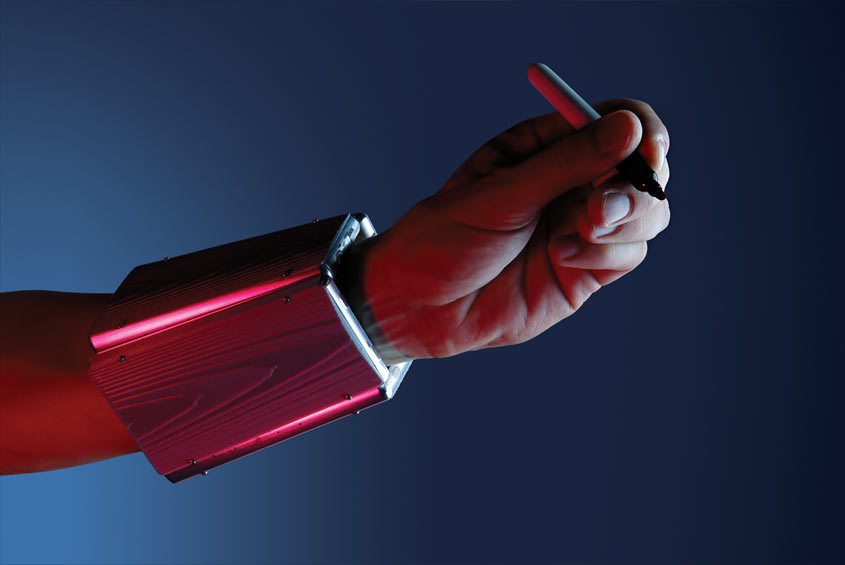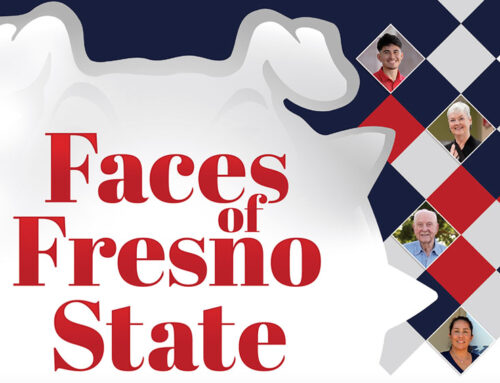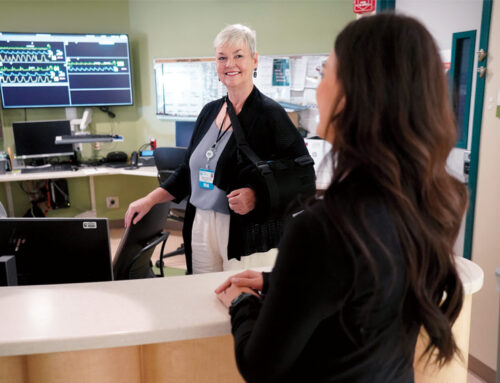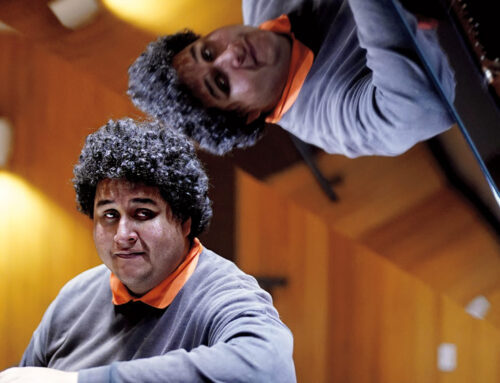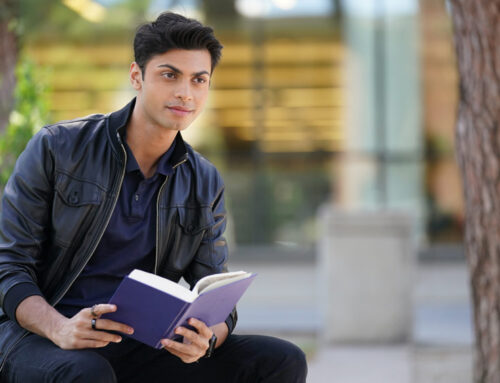Developing tremor-suppression technology to help people with Parkinson’s
By BoNhia Lee | Photos by Cary Edmondson
Mechanical engineering professor Dr. The “Leo” Nguyen crouches down toward the floor of his testing facility trying to get a good look at the trembling hand of Winston Field, a 78-year-old man with Parkinson’s who is part of a trial study for the professor’s new invention.
Nguyen rests his chin between his thumb and index finger, eyes fixated on his subject’s hand and the intricacies of each involuntary movement shaking right to left, going up and down, faster then slower.
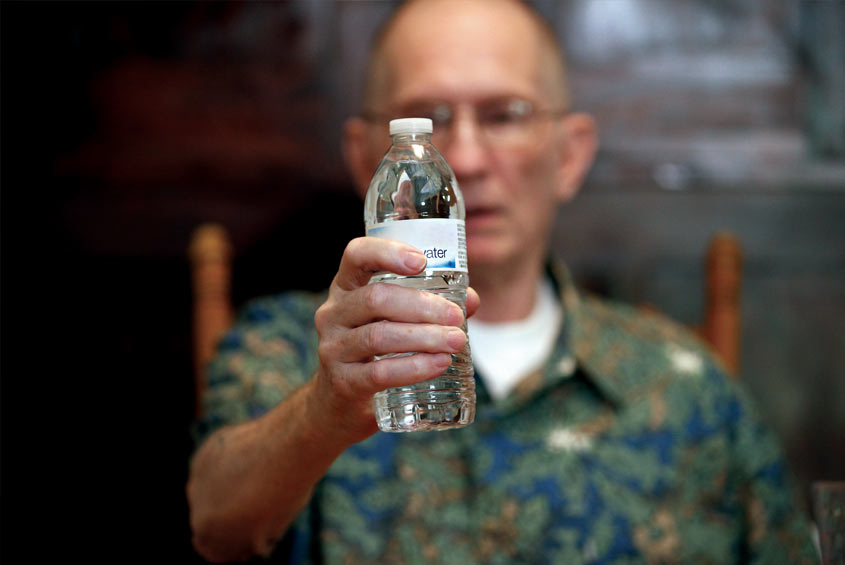
The Lyles College of Engineering professor at Fresno State is collecting observational data that he and a graduate student will take back to the lab and use to refine the tremor-suppression device he’s created. They follow this process week after week with patient after patient, and will do so until they get it just right.
After years of work in machine design and dynamics, Nguyen decided it was time to use his skills to help people. He spent some time in medical engineering, working to improve the design of leg prosthetics to reduce the cost so people without insurance can afford it.
Now, in between teaching classes, he’s working on the research and development of hand and arm devices with graduate student Sreekanth Rudraraju.
“With my expertise, I said, ‘OK, why not do this?’ I already work on vibrating machines and structures,” Nguyen says. “Human arms would be much more complex, but let’s give it a try.”
The devices use the principle of energy absorption — normally found to steady planes, bridges and tall buildings — to counteract the shaking in hands. The prototypes have a patent pending and are still in the research and testing phase, but early results show that they are working to reduce tremors and improve fine motor skills for some of the patients in the trials.
New California Ventures LLC, a wholly-owned subsidiary of the Fresno State Foundation, provided early seed money and a significant capital investment to Nguyen to conduct research and develop a prototype device through Five Microns, a medical-device company he started. This allowed Nguyen to complete the patent application process, conduct further research and develop and test his prototypes.
Fresno State is the only campus in the California State University system with a for-profit entity that can retain a percentage ownership in such start-up companies. Once a patented product or service is licensed and commercialized, Fresno State will receive a portion of the licensing
fees that can be reinvested into scholarly research.
Desire to help people
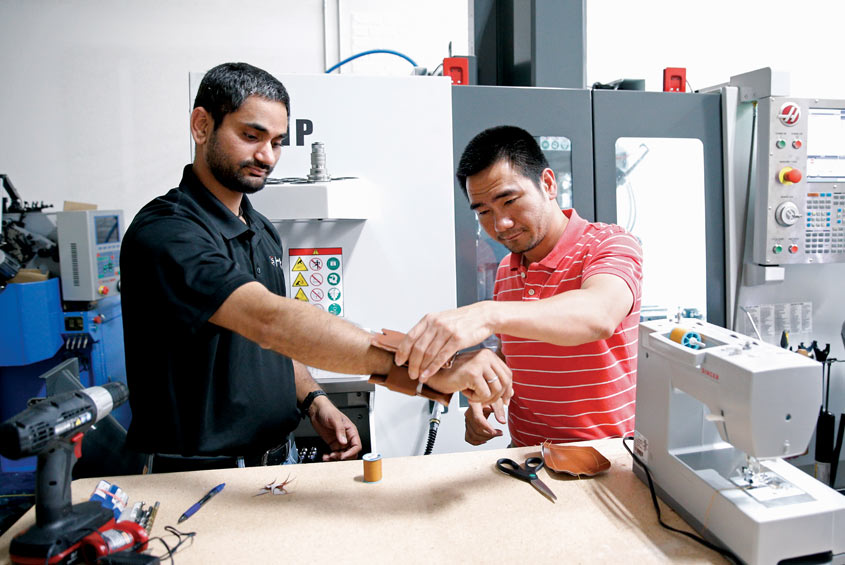
Nguyen’s interest in hand tremors started in Vung Tau, Vietnam, where he grew up watching soldiers battle Parkinson’s years after exposure to Agent Orange, a blend of herbicides used by the U.S. military to kill leaves, other foliage and crops during the war. Studies have shown that exposure to Agent Orange increases the risk of developing Parkinson’s.
The Parkinson’s Foundation estimates that 930,000 people in the United States will be living with the disease by 2020. About 60,000 Americans are diagnosed with Parkinson’s every year, the foundation says. In California alone, there are 85,100 people with the disease.
In 2012, Nguyen came to the San Joaquin Valley to teach at Fresno State, where he continued to see and meet people with Parkinson’s. The Valley is known to have one of the highest rates of Parkinson’s disease in the nation.
“This is affecting people’s lives, their independence,” Nguyen says. “They’re not really ill. They can still lift weight, it’s just that they cannot do fine movement anymore. That’s my goal, to help that.”
Nguyen collaborated with colleagues in the Physical Therapy Department at Fresno State who work with Parkinson’s patients. He brainstormed design possibilities with students and made it a class project. In 2016, Nguyen used a basic mechanical engineering concept to create the first prototype.
The Tremelo is a sleeve with two to four vibration absorption panels fitted around a patient’s wrist. Inside each panel is a mass-spring-damper system that swishes back and forth against the arm, absorbing the energy created by the shaking which helps stabilize the arm. The device does not run on batteries and it does not deliver electric shocks.
In recent months, the Five Microns team created two more devices, using the same vibration control concept, to address the range of tremors that exist — some swing back and forth, some go up and down and others happen only while resting.
Rudraraju, who is from India, says this is one of the most intricate designs he’s ever worked on. The mechanical engineering major, who will earn his master’s degree in mechanical engineering at the end of the fall semester, has worked on the tremor project with Nguyen for two years. Before that, he worked in the mechanical engineering industry in India for nine years.
“Every time you see a patient, you’re trying to understand their behavior,” Rudraraju says. “Then it’s understanding the mechanical mistakes and how to influence the design, how to modify the design. That is really most challenging.”
Promising results
Winston Field, the man participating in trial studies, is upbeat and eager as he walks slowly into the Water, Energy and Technology Center, a business incubator at Fresno State, to test Nguyen’s hand-tremor devices as he’s done several times before as part of the trial.
An avid motorcyclist for 35 years, Field first noticed his arms shaking in 2008 while gripping the handlebars of his bike. He was diagnosed a year later with Parkinson’s. His father had it, too.
The disease has slowly taken away Field’s ability to use his right hand for tasks like drawing a straight line and using a spoon. He takes two pills five times a day to suppress the shaking. But on this day, Field skips his mid-morning dose because he needs the severity of his hand tremors to show.
There aren’t many options for treating Parkinson’s, just loads of medication or brain stimulation surgery when the meds don’t work. Exercise can also help.
Field, a former psychiatric nurse, once participated in balance assessments through the College of Health and Human Services at Fresno State.
Dr. Monica Rivera, assistant professor of physical therapy at Fresno State, introduced Field to the Five Microns team two years ago, and he has become their most loyal community participant.
He walks the treadmill four times a week and participates in balance classes twice a week. He doesn’t want brain surgery and wants to reduce his dependence on drugs.
There are other hand-tremor devices in the research and testing stages, but none that use the energy absorption concept that makes the Tremelo family of devices unique, Nguyen says.
Dr. Bhupinder Singh, assistant professor of physical therapy at Fresno State who helped Nguyen submit grants for the device, agrees the product is one-of-a-kind. Nguyen has collaborated with physical therapists who know how this will work on patients and he is actually testing the device in different ways, Singh says. Singh specializes in the study of gait and biomechanics and also runs the Gait Analysis Movement Evaluation lab, which works with Parkinson’s patients in the Valley.
“Everyone else is focused on what they call aggressive exercises to help improve the ability to do a task,” Singh says. “Dr. Nguyen is trying to address the problem first hand.”
Nguyen and Rudraraju are working hard to finalize designs for the devices.
“We are doing our best to get the device to the users as soon as possible,” Nguyen says. “It will potentially help thousands of patients with severe tremors regain many activities of daily living to improve their quality of life. That’s the ultimate goal of this work.”
To demonstrate, Field holds a black marker in his hand and attempts to trace a straight line on a whiteboard. His right hand shakes back and forth picking up speed creating long waves weaving through the straight line like a seismograph that has just picked up strong vibrations in the earth.
The tremors get faster when he’s excited by an activity. Then, Rudraraju slips the Tremelo on Field’s arm. He goes back to the board and traces the line with more ease and smaller, less frequent waves.
“The devices work. They do work. And they’ve gotten to be more effective in my opinion,” Field says.
In August, Nguyen and his team brought pizza to Field’s Fresno home to celebrate his birthday — and used it as another opportunity to test their research. Field wraps his hand around the handle of Nguyen’s newest model, holds a cup with water and raises it to his mouth with no shaking. Without the device, the water slops over the sides of the cup.
“One of these days, there will be a cure for Parkinson’s,” Field says. “Dr. Nguyen was very real about this and said it wasn’t going to solve things next year or the year after that. But I think there are real possibilities.”
— BoNhia Lee is a writer in University Communications at Fresno State.

